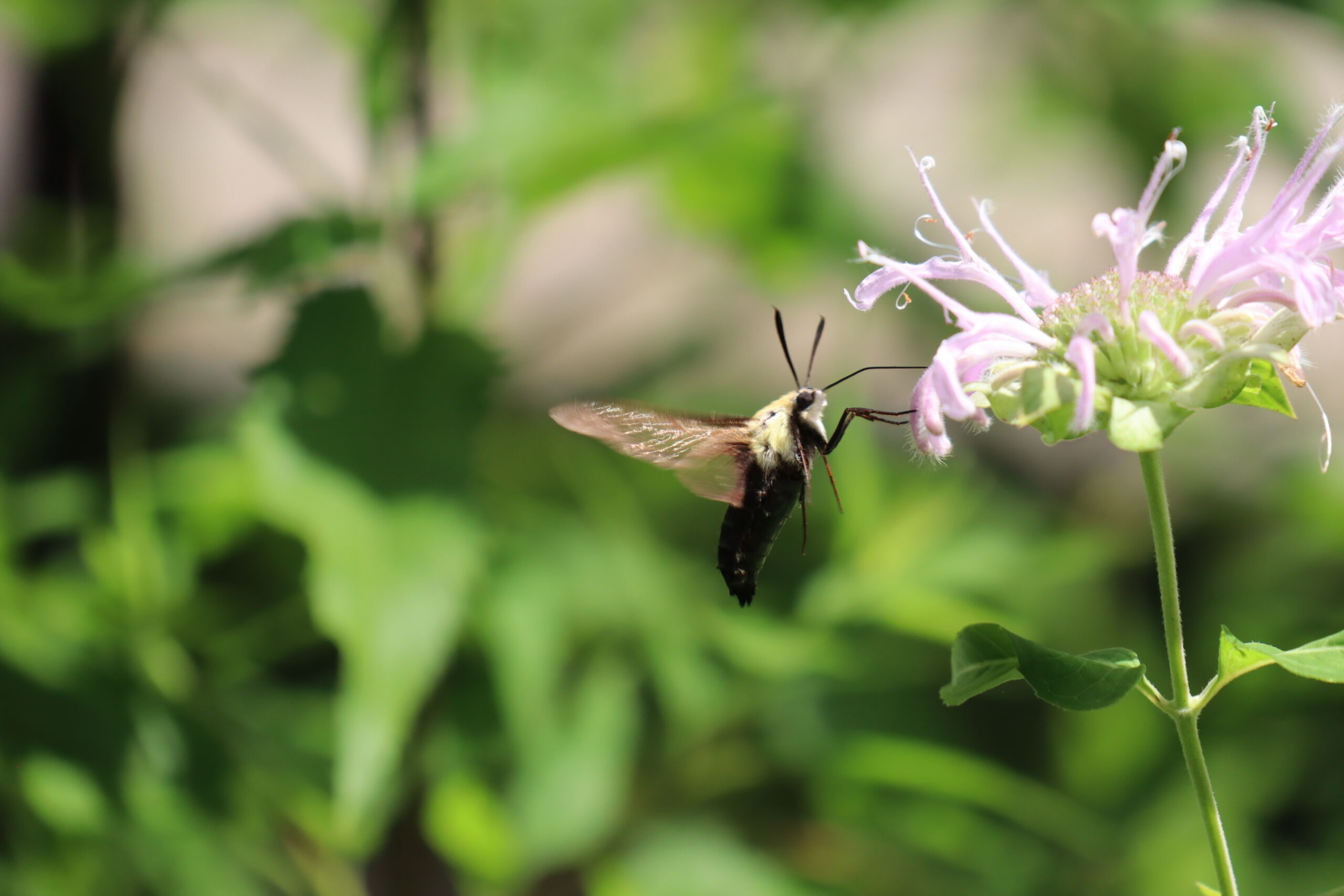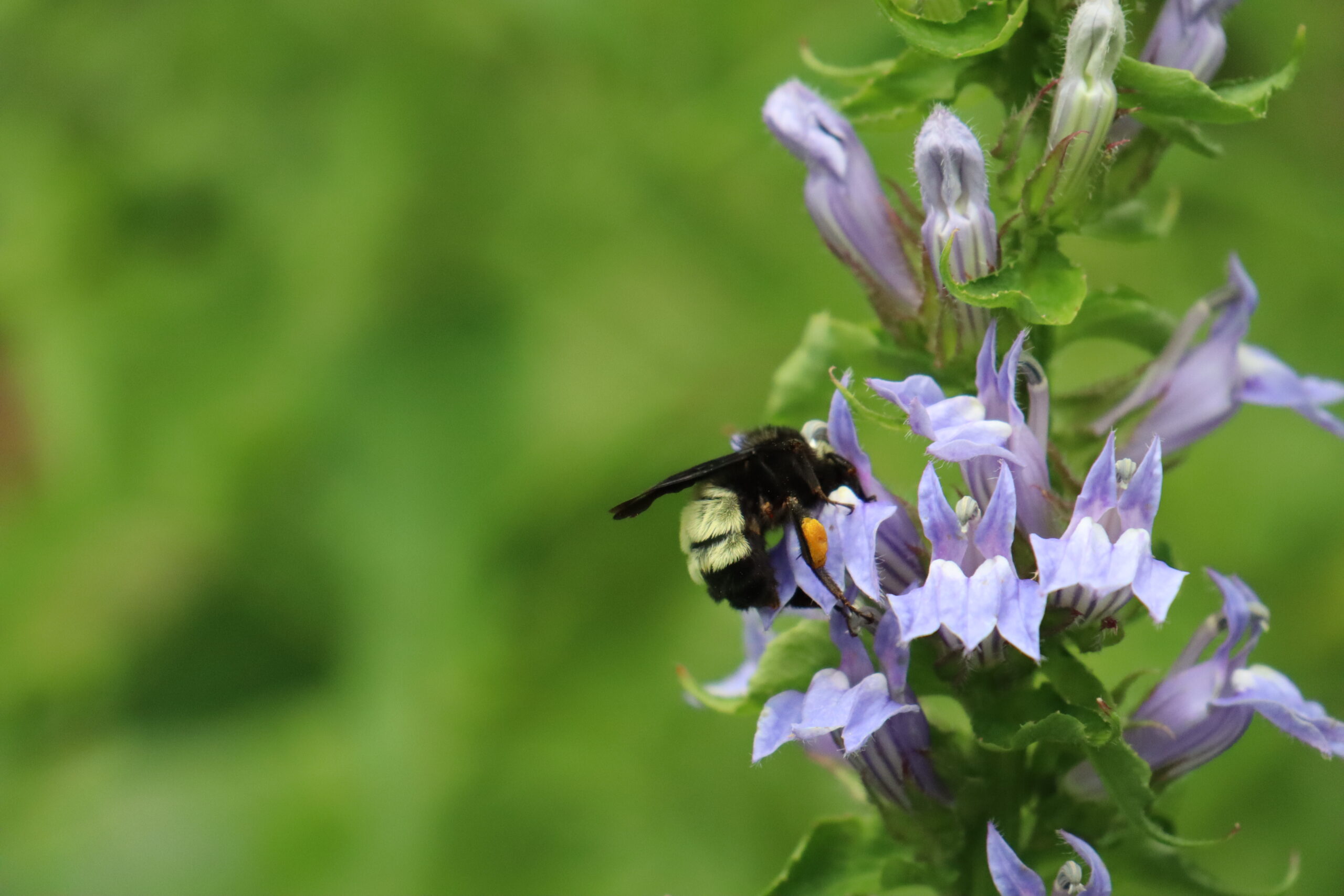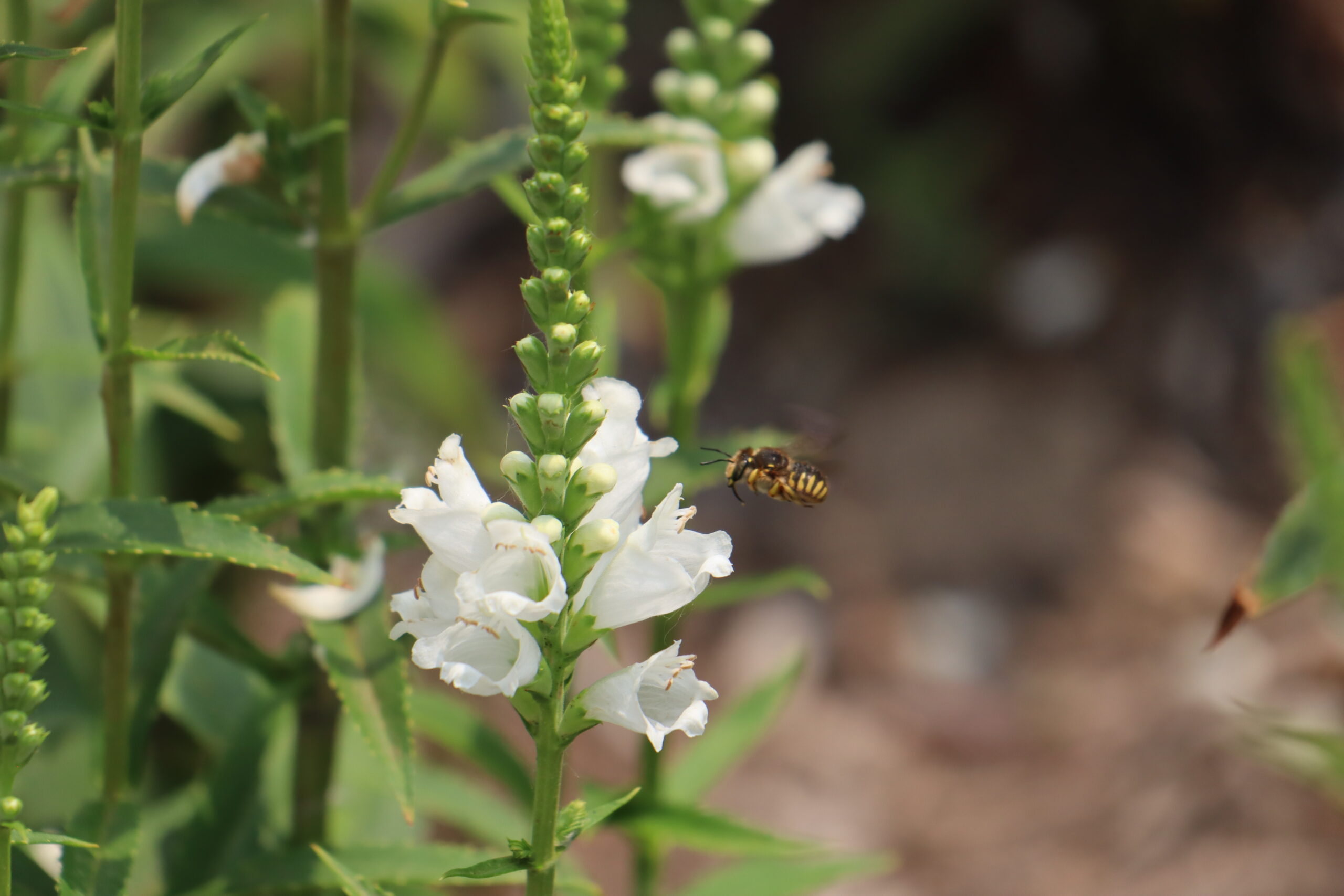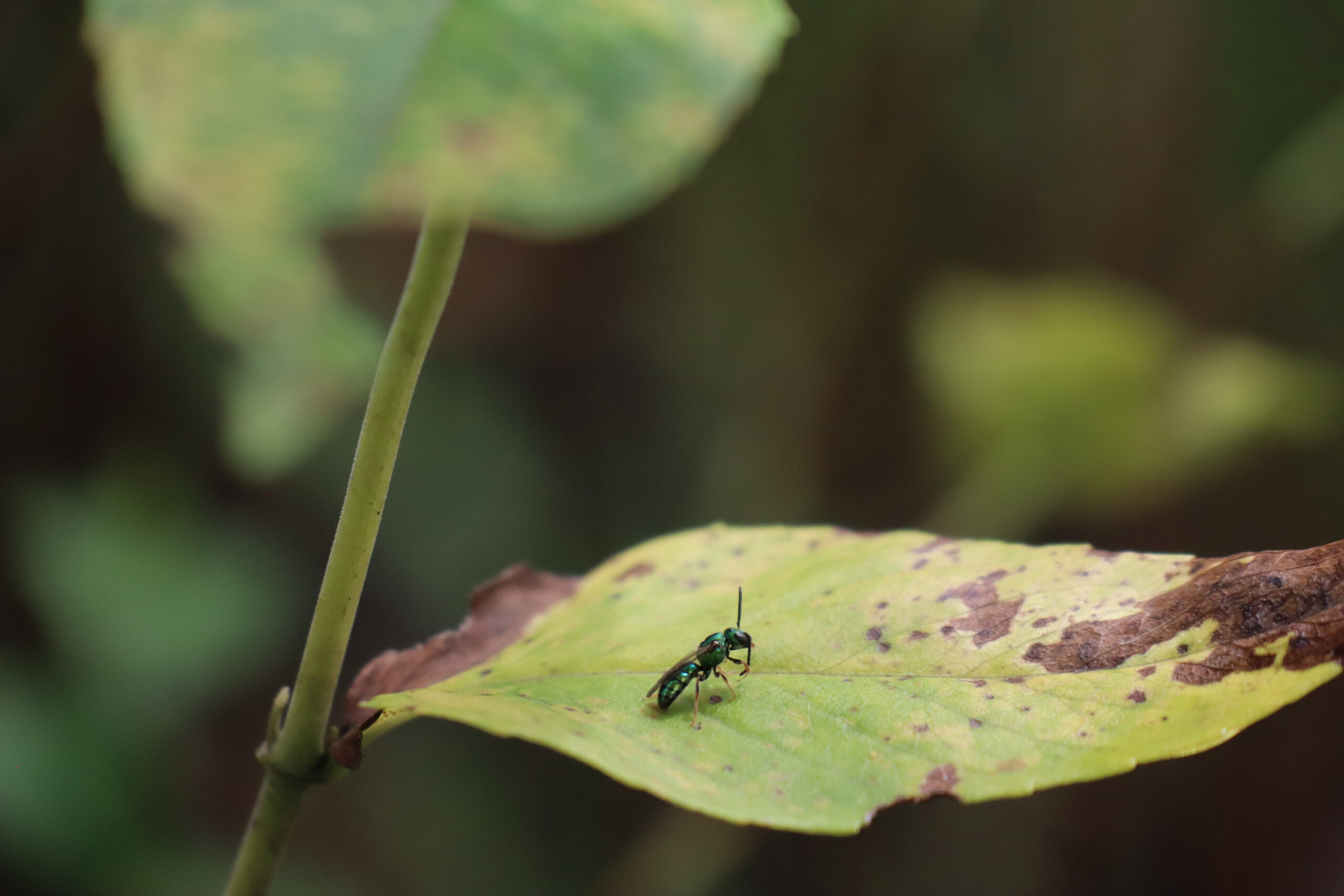Author: Lisa Trapp
Research is starting to suggest that urban landscapes that prioritize native species and utilize diverse plant palettes, may be hotspots for supporting our native pollinators (1). These densely planted areas can provide opportunities for pollinators to find food, habitat, and overwintering resources all within a relatively compact space. By contrast, suburban and rural environments may not support pollinators as well as once believed. Even though these areas have more lawn and green space, insects are often plagued by a lack of resources within a forageable distance. The distance between available pollen and nectar sources can be costly, with exposure to chemicals, vehicle collision, and natural predation contributing to loss. Additionally, the presence of sidewalks and concrete, often seen as a negative in urban environments, could actually be a helping hand for cold-blooded insects because these hard surfaces hold onto the sun’s heat. But are urban environments actually seeing higher and more diverse populations of pollinators? This is a tricky question to answer and will require years of research in urban, suburban, exurban, and rural environments all over the world. Fortunately, research is already underway.
This summer, Capital Trees had the opportunity to work with Dr. Nicholas Ruppel, a professor from Randolph-Macon College. The goal was to get a better understanding of what pollinator species might be utilizing our public landscapes. Great Shiplock Park and the Low Line Gardens are located in a uniquely challenging area of downtown Richmond. Sandwiched between Dock Street and the Capital Trail on one side, and the Kanawha Canal on the other, the gardens are fairly isolated and receive high environmental pressure, including increased temperature, above average noise levels, air and water pollution, and a high percentage of impervious surfaces.
With the urban context in mind, we’ve strategically designed the gardens to create a welcoming and stable insect habitat. Since the Low Line’s completion in 2016, Capital Trees has incorporated 75% or higher state native (or relative cultivar) in the garden designs, and prioritized sustainable gardening methods. We’ve eliminated the use of systemic herbicides and pesticides in the beds, which are harmful to pollinators. We also leave leaf litter in the garden beds through the winter to provide safe habitats for overwintering insects. Additionally, hollow stalks from perennial plants are cut to a few feet high and left as available overwintering habitat for tube nesting bees, and bare soil is available as a resource for ground nesters. A diverse plant palette with multi-seasonal blooms provides a range of available pollen and nectar resources for a variety of nectar consuming insects. These efforts should be helpful for pollinators, but do these methods really make a difference? Or will the gardens primarily have generalist species that are scrappy enough to brave their way to the space? Will biodiversity be fairly low overall despite our best efforts to create meaningful and supportive habitat?
Generalist species can feed on a wide variety of food resources and thrive in a range of environments.

Research in the gardens took place from early June through August 2023 and prioritized two main methods to identify pollinator species. First, blooming plants in Great Shiplock Park and along the Low Line were photographed for 10 minute stretches, 2-3 times a week. Every insect that landed on a flower was photographed and documented. This is obviously not a perfect system, as it assumes insects will still land if people are present next to the plant, and allows for species to be missed if they land while another insect is being photographed. To help supplement this method and get a sense of the insects that were using the space outside of the active research window, Bee Bowls (2) were set up adjacent to some of the more active plants. Bright yellow bowls were filled with a mixture of soap and water and placed at plant flower height. This part of the process is tremendously valuable. This system allows an accurate capture of species that might be present when people are not, and allows for proper identification of species that are too small to identify by eye. Additionally, many of our 4,000 species of native bees have yet to have their genome recorded. Species collected with no current genomic record on file can have their DNA sent away to help with future research.
Though it is still too early for conclusive results on what was observed, we do have a general idea of some common genus, and select species, that were repeatedly recorded. Throughout the summer four separate species of Bumble bee (Bombus spp.) were noted. Carpenter bees (Xylocopa spp.), iridescent green sweat bees (Agapostemon), Long horned bees (Melissodes), and several different species of leaf cutter/resin bees (Megachile spp.) utilized plants in the gardens. Skippers were a common sight as July gave way to August, as well as snowberry clearwing moths (Hemaris diffinis), hover flies, and a range of wasps, which utilize these food sources and are important parts of the ecosystem even if they aren’t strong pollinators. Also documented were nonnative species like the European honeybee (Apis mellifera), the alfalfa leafcutter bee (Megachile rotundata), and the European wool carder bee (Anthidium manicatum).
- Snowberry Clearwing Moth
- American Bumble Bee (Bombus pennsylvanicus)
- European Wool Carder Bee (Anthidium manicatum)
- Iridescent Green Sweat Bee
There is still a long way to go towards understanding the full scope of species present at Great Shiplock Park and the Low Line, and there is no official conclusion on the current data at this point. It is safe to say this research has provided a very exciting first step. Perhaps most exciting is the wealth of possible questions that can continue to be asked moving forward. Where are the bumble bees or pseudo social bees nesting? Are the more specialist species using the cultivars as much as the true native plants that are available? What species are present in the gardens that were not observed, or are the gardens supporting any highly specialized, rare, or endangered species? Needless to say, we are excited about the garden’s ability to increase our understanding, and continue to create more meaningful habitat for our pollinators, while also engaging and creating welcoming spaces for our human visitors too!
RESOURCES:
- https://conbio.onlinelibrary.wiley.com/doi/10.1111/cobi.12840
- https://link.springer.com/article/10.1007/s00442-019-04416-x






